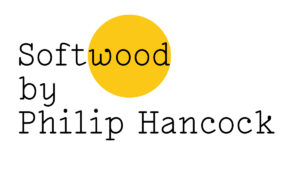Three poems by John Greening
Two of Greening’s poems here are ekphrastic – they approach an existing work of art. ‘The Boxer’ delivers a portrait in words of an actual bronze sculpture – we’re guessing that it’s ‘Boxer at Rest’, a Greek sculpture of a seated nude boxer excavated in Rome in 1885 and now in the Museum of Rome. Greening describes his subject, complete with scars, bruises and wounds, in plain, uncomplicated but tender language. He brings him to life for us, and somehow makes him modern. It’s a clever poem too – sculptures at the time were often melted down to make other objects or coins, for this boxer the “most humiliating blow”. We like the way gentle rhymes thread through the poem: be / see / dignity, bronze / hear / ears, him / them, and that / defeat, and the way Greening puts “to hear” and “to see” at the end of lines in the second stanza.
In ‘Villa’, the narrator and his partner are visiting the remains of a Roman Villa – we’re guessing this is Great Witcombe Roman Villa in the Cotswolds, once a large country estate with mosaic pavements, a bathhouse complex and perhaps a shrine to a water spirit. Now the site is un-signed from the road, and there’s little left but a few courses of stone and a view, plus the usual posse of workmen and their dog. Out of this unprepossessing scene Greening manages to make a kind of magic. As the narrator finds a way into the “locked and shuttered” modern building – one, perhaps, of the labours of Hercules – the workmen become Romans, the man bearing a weed burner becomes Orpheus with his lyre, and we find, perhaps, what we knew all along – that people back then were not so different from us. Greening’s language is accessible and contemporary but the theme is a universal one. Again, the rhyme is subtle and smart; the poem wraps itself up beautifully with there / hare / four / lyre. The whole thing is neatly done and oh so satisfying.
Greening’s final poem, ‘Two in the Galleria Borghese’, riffs on two paintings in the Borghese Gallery in Rome – ‘Sacred and Profane Love’ (Amore Sacro e Amor Profano) and ‘Venus Blindfolding Cupid’, both by Titian, the first one painted when he was in his twenties and the latter when he was seventy six. And this seems to be what the poem is about – the passage of time, and the gifts (or otherwise) of age. There’s a lot of ambiguity in the poem, including some amusing confusion over which figure, in the first painting, is Sacred and which Profane; perhaps the poet feels ambiguous about the ageing process. He’s also interested in what has spurred Titian’s creative process on – young love, and love after it turns ‘sepia’. Greening has a great ear for a nicely turned phrase – we particularly love “thrill of oils”.
The Boxer
He is bronze, yet has avoided that
most humiliating blow, to be
melted into coinage. One hand rests
over the other, in leather gloves.
The money’s forgotten. Exhausted,
turning in blind acceptance to hear
whatever the referee tells him,
that it’s all over perhaps. To see
the scars, battered eye and swollen ears
(and the pains taken to portray them
in dark alloy and red copper) is
to see not defeat but dignity.
Villa
No sign at the roundabout, but we find it –
a single track through a farmyard to a car park,
which is empty, then a gentle walk along
towards Cooper’s Hill, where cheeses go rolling
down into the dark ages each Spring.
A tranquil spot, except for that barbarity
from someone’s radio blaring out of the terraces
and with it the roar of a weed burner, one
of three men in yellow searing moss
among what’s left of high status.
They’ve brought a bull-dog with them, who plays
a crushed-water-bottle accompaniment
to their stories: that pipe running right down
from a spring on the hill and into the farm; this duct
feeding what he insists was a septic tank.
Plunge pool, we think. Though sources do
suggest this may have been some kind of shrine
to a water deity. We have been visiting such sites
for much of our lives. But this one’s little more
than its view. A few courses of stone. And what?
The blow-torch starts. We’re all descendants, you know.
He’s Gladiator Dan, that’s Merv the Legionary,
and my name’s Caesar. He smiles beside
the locked and shuttered structure they are clearing round.
There’s nothing in there. The dog continues to chew.
There is something, ‘preserved within a modern building’
according to the website (‘no access’, it adds)
and we open it for ourselves: the labours of Hercules,
a nymph, a hunting scene with hare, the four
winds or elements or seasons, Orpheus and his lyre.
Two in the Galleria Borghese
Which is which must remain
a topic for professors
but Cupid isn’t looking at
either of them, he’s cooling
his fist in the water.
What a fascinating
work it is, the two women
so alike yet each accepting
a role to deliver through
this letterbox in time.
I’m sure I self-addressed
the image in my teens and
now in the Borghese it has
reached me, yet when I turn it
over there’s no painting.
Pointing at Venus Blind-
folding Cupid, which Sacred
(or Profane) has fixed with her gaze,
the guide says when he did that
he was seventy-six.
Sex is what this one from
his twenties is about, love
before it turned sepia, that
visionary thrill of oils
and ambiguity.

